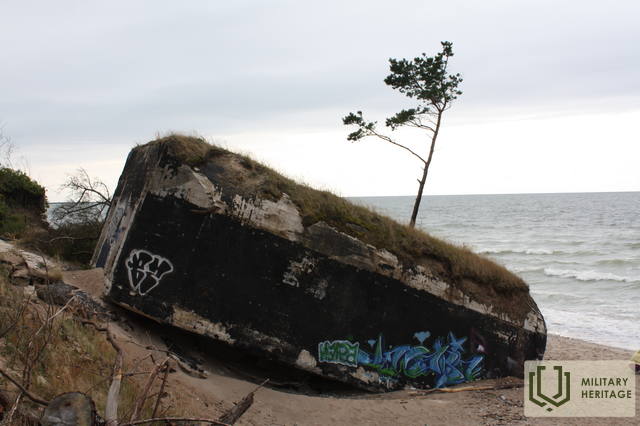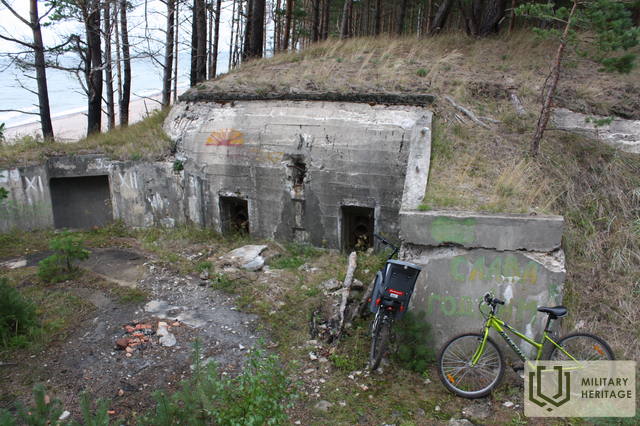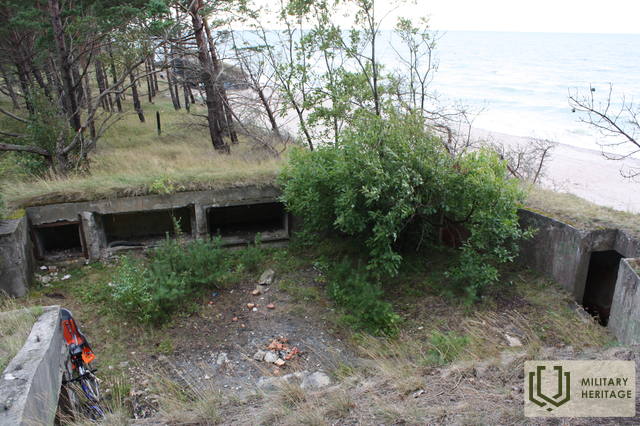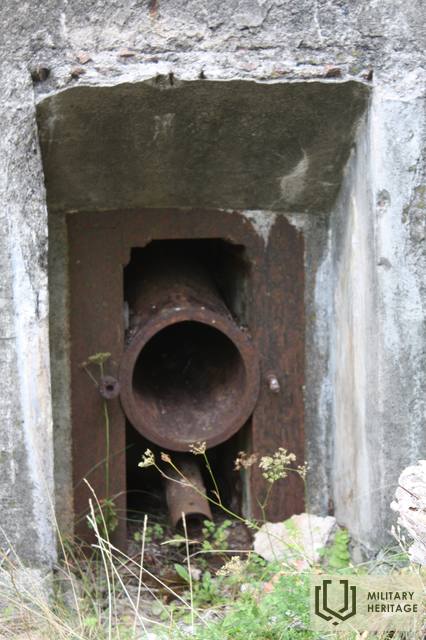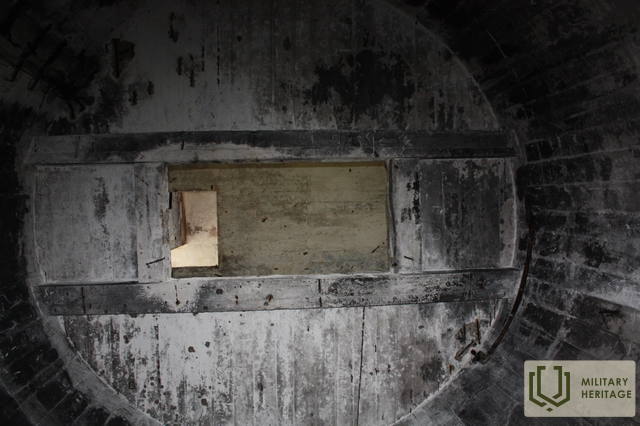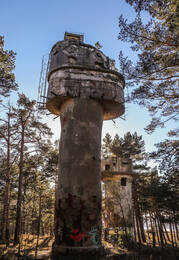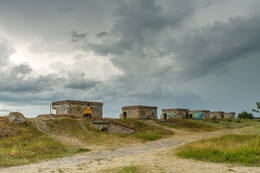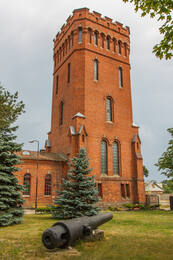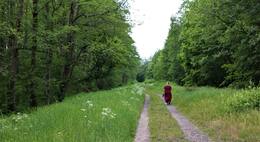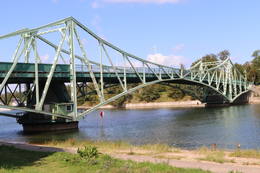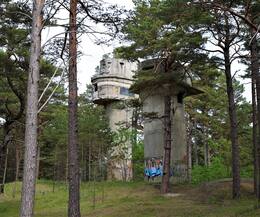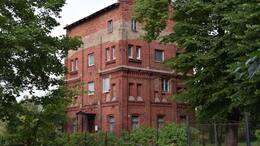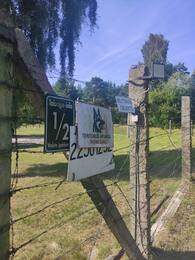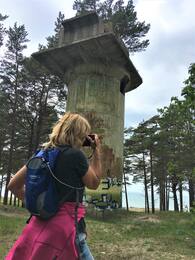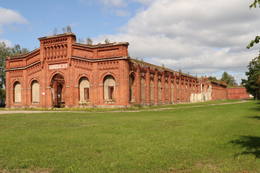The story of a unique military object in Karosta
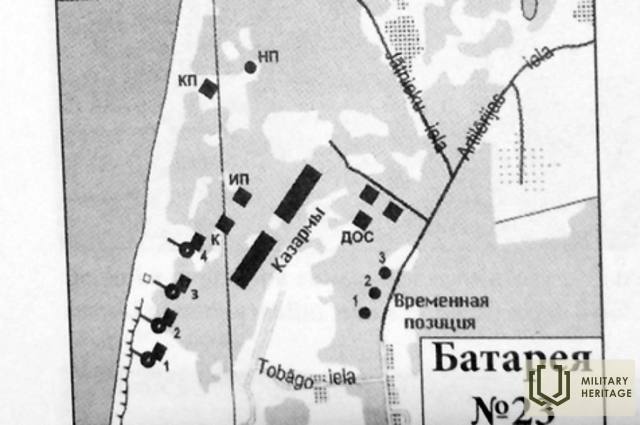
For years, I have not noticed any sustained interest in the unique places just eight to ten kilometres north of the city centre among the residents of Old Liepaja. But hidden in the thicket of the forest, on the dune bank or on the marsh paths, the historic sites of the Karosta are no less interesting historical facts and stories worthy of long-forgotten legends. One of them - the former 23rd Coastal Artillery Battery of the USSR - will be the subject of this story.
Simultaneously with the artillery battery of the 27th coast in the current Pērkone Greenland, the USSR military also started to build powerful artillery positions in the northern part of Liepāja, Karosta, Tobago and Jātnieku streets. Today, this is evidenced by the well-preserved rangefinder towers, underground command post, concrete warehouse vaults, communication center and fire pool contours. However, four concrete positions of 130 mm caliber naval cannons have been the least able to withstand the time tooth and shore collapses.
The importance and urgency of the Russian Soviet "limited" contingent in the Republic of Latvia to station heavy cannons right here can be ascertained by walking along Lībiešu Street in the direction of Šķēde Gardens - the 23rd battery temporary positions are still visible on the partially swampy and overgrown left side of the highway. Their capers - ramparts for three cannons were built on wooden shelves first, during the frosts of the autumn of 1939. Cannon crews who had to sleep in tents began battle duty at the end of November 1939.
Construction of the "real" battery began in January 1940. The first objects were the so-called engineering positions - diesel power plant, heating mains, wooden log barracks, sanitary barracks, laundry and boiler house, but the former tsarist batteries No. 2 on the south side, also concrete and armored steel "hat" covered command post. In May 1940, while planning a road route in the dunes to move heavy cargo, about 300 soldiers set about concreting cannon positions and underground galleries. Needless to say, all the works were vigilantly watched by the NKVD and local farmers of Šķēde and Medze parishes, who worked on bringing stones and gravel, the entrance was denied - the Chekist took the reins of the cart and entered behind the barbed wire fence, there is nothing to rub blisters in foreign eyes! *
However, no secret concealment in the bag prevented the rumors that a dozen concreting works had been an alien element to the working class and negligently violated the process of continuous pouring of concrete. The villain was shot, of course.
A resident of Medze, then a boy, recently told me about the rather strange adventures while building the battery: "We were driving to the Liepāja market in the sleds, and we heard the noise of hell at the" Zvaigznes ". Giant sleds were made of two logs, stacked with steel studs from the Medze quarries, and Russian soldiers also walked next to them or sat on the "sleds", but on the stone carriage like a man with a "gourmet" sitting on the throne **.
23. The batteries were put into operation on May 5, 1941, and on May 17, the crew, 180 people, started combat duty.
In the June 1941 battles, the commander of the battery, Captain Gordeychuk, managed to move the cannons for shooting against the attacking Germans in the Grobiņa-Brēdiki district. On June 27, the cannons were blown up.
Now the remains of a battery, artillery rangefinders, cannon yards, underground galleries and a command post are forgotten and gloomy objects, but I think they have retained their aura of sad history.
* Глаза мазолить - a Russian expression - to hide from strangers.
** Garmoška. Musical instrument - bellows harmonicas.






https://irliepaja.lv/vide/stasts-par-unikalu-militaru-objektu-karosta/
Related timeline
Related topics
Related objects
Liepaja Coast Defence Battery 23
The battery is located between Tobago and Marine Streets, seawards.
According to the "base agreement" between the Republic of Latvia and the USSR, signed on 5 October 1939, a contingent of nearly 25 000 Red Army and Baltic Navy troops was to be stationed in Kurzeme. By March 1941, Baltic naval bases were established in Latvia in the defence sectors of Irbe Bay, Saaremaa and Liepaja, consisting of coastal defence batteries.
...Karosta, the Military port of Liepāja (tour)
The Karosta is the largest historical military territory in the Baltics and occupies almost one third of the entire territory of Liepāja. The Karosta is a unique compound of military and fortification buildings on the shores of the Baltic Sea with a special meaning in the history and architecture of Latvia and the world. The Karosta features such military heritage sites as the North Pier and forts, the Redan, Karosta Prison, Karosta Water Tower, St. Nicholas Orthodox Maritime Cathedral, Oskars Kalpaks Bridge and others.
Liepāja Northern Fort and Battery Nr.1 in Karosta
The Northern Forts are the best known and visually most impressive part of the Liepāja Fortress. Built by the Russian tsarist army in the late 19th century, their historical name is Fortress Battery No 1.
In November 1908, less than 10 years after its construction, the Liepāja Fortress ceased to operate, because its construction was acknowledged as a strategic mistake. Some of the cannons...
Karosta Water Tower
The water tower is located in Liepaja, in the Karosta, at 29 General Baloža Street - where the street meets Lazaretes Street. The water tower was an important building in the Karosta, as it supplied almost the entire Karosta area with drinking water. The exact time of construction of the water tower is unknown, but it could have been between 1903 and 1905. The project was probably designed by the St Petersburg architect Stefan Galenzovsky.
...Freedom Trail (Karosta route)
A well-maintained, 9 km long walking trail created to commemorate the bravery and heroism of Latvian men during the Latvian Freedom Struggle in 1919.
The trail starts in Redana and runs through the forest area of Karosta, along the seashore and the Cietokšņa Canal, including a visit to the Tsarist-era fortifications and Soviet-era military heritage. The trail features 5 information boards, which introduce the creation of the Karosta and the fortification system that encircles the entire city, the 1919 Battle of Freedom in Liepāja...
Oskara Kalpaka Bridge in Karosta
The bridge named after Oskaras Kalpaka is Liepāja's gateway to the Karosta and is located at the meeting point of Oskaras Kalpaka and Atmodas Street - across the Karosta Canal.
The unique swing bridge was opened on 19 August 1906. The bridge was blown up during World War I, but was rebuilt after the war. The bridge was rebuilt again after it was damaged by the steamship Narne in 1926, but it also suffered during World War II when the invading Soviet army shelled the port of Liepaja. Until the restoration of independence of the Republic of Latvia, the...
Rangefinder No.2 of the 23rd Shore Battery (1954)
The rangefinder (dated 1954) is located in the pines of a dune 10m away from the 1941 rangefinder. The gun positions of the 1st and 2nd guns of the shore battery are located on the seafront and partially eroded, while the gun position of the 4th gun is best seen in the dunes.
Liepaja Fortress Battery 2 was planned to be built further from the shoreline and protected by a high rampart. The armament of the battery was to be 16 11-inch (280 mm) mortars of the 1877...
Pigeon post sea station in Karosta
The former naval pigeon station No.2 - actually a breeding station - is located in Karosta, Pulkveža Brieža iela 6. It was built between 1899 and 1900 and was intended to house about 450 carrier pigeons - winged soldiers. In later years, the building was converted into apartments, so that only the red brick volume of the building remains. The other post pigeon station, No 1, which has not survived, was intended for the use of 750 ground troops and was located at the northern end of Atmodas Boulevard.
...Liepāja coastal artillery battery No. 2
Among the many objects of Liepāja Karosta, Liepāja coastal artillery battery No. 2 is still the most mysterious place in Liepaja. In battery no. 2, the ammunition depots of the troops of the various existing powers were always installed.
Liepaja Fortress Battery No. 2 was built further from the coastline and was protected by a high rampart. The batteries were armed with 16 11-inch (280 mm) mortars of the 1877 model. After...
Rangefinder No.1 of the 23rd Shore Battery (1941)
The rangefinders (dating from 1941) are located in the pines of the dune, only 10m from the other tower, built in 1954. The 1st and 2nd gun emplacements of the shore battery are located on the seafront and partially eroded, while the 4th gun emplacement is best seen in the dunes. The reinforced concrete bunker of the personnel who manned the guns is now washed away by the waves and has a washed-out foundation, tilted and leaning seawards.
...Karaosta manège
The ruins of the Karosta manege are located in Karosta, at 2/12 Zemgales Street, between Zemgales, Burtnieku, Virssardzes and Manēžas Streets.
Until World War I, every Sunday the manege was used for cavalry, artillery and senior officers' sport horse demonstrations and on weekdays it was used for matrons' physical education classes. It was the largest covered hall in Liepāja, so it was also used for official receptions and meals of honour for the garrison matrons. In 1913, from 13 January to 26 April, the 300th anniversary of...





